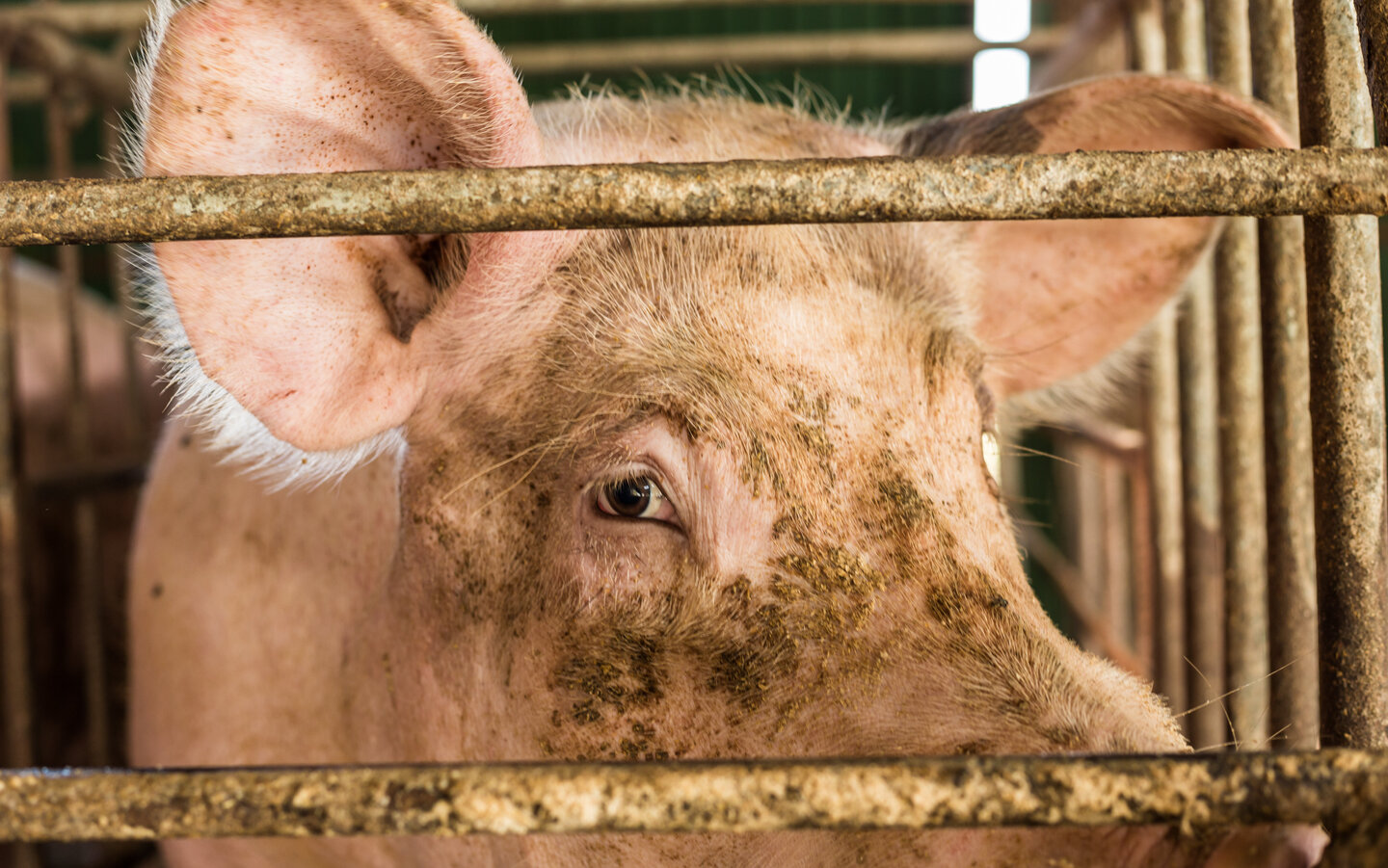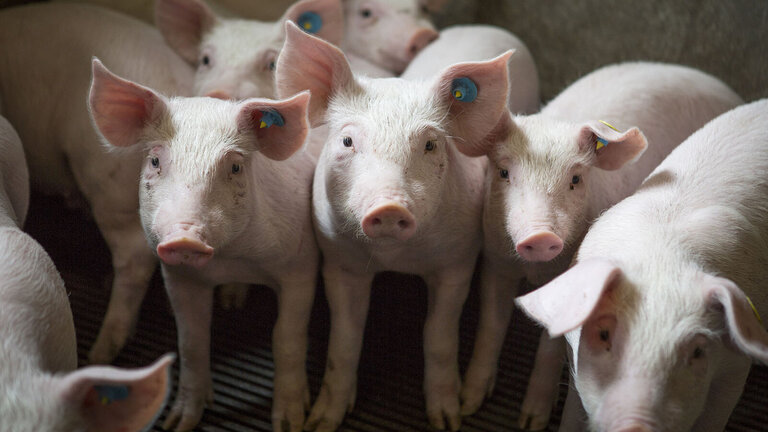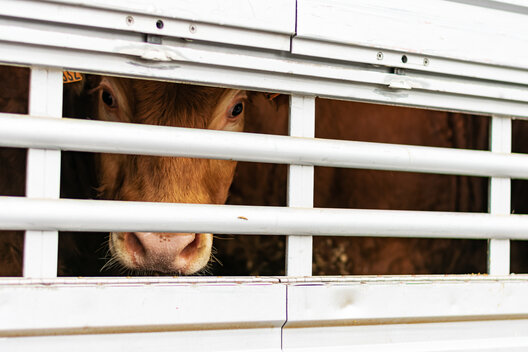Slaughter often torturous despite stunningHow animals suffer when we slaughter them
How and when farms are allowed to slaughter chickens, pigs, cattle and other animals is regulated by law. However, the regulations in Germany and the European Union are inadequate from an animal welfare perspective. Even some of the most common stunning methods are so painful and error-prone that they should be banned.
Stunning during slaughter often does not work
In Germany and the EU, anyone who wants to slaughter poultry, pigs, cattle and other animals must stun them beforehand. Without stunning, this is only possible with a special permit, but animals still die in unbearable pain and suffering at local slaughterhouses. This is because they are stunned incorrectly. This means that the animals are not stunned at all, not stunned deeply enough or not stunned for long enough. In the worst case, they are consciously aware of the slaughter and the way to it. There are many reasons for such incorrect stunning: it may be that the electric tongs for the electric current or the captive bolt stunners, which stun by firing a shot into the brain, are poorly maintained. Or that the employees use them incorrectly because they are not trained well enough or are under great time pressure. Stunning poultry in an electric water bath also poses a significant animal welfare problem. If the birds are not immersed with their heads in the water, they are not stunned.
Gas stunning before slaughter triggers panic
Some stunning methods that are part of everyday life in slaughterhouses are associated with stress and suffering from an animal welfare perspective. This applies, for example, to carbon dioxide stunning. As soon as pigs are exposed toCO2, this irritates their mucous membranes. Every breath is painful. The animals gasp for air and try to flee in panic before they fall unconscious. It takes an agonizingly long 20 seconds for pigs to do so, and up to six minutes for salmon.
Poultry often experience slaughter consciously
Farms that slaughter poultry often stun them in an electric water bath. To do this, they hang the animals upside down by their legs in holding hoops. This alone is usually painful. If the chickens, cockerels, turkeys, ducks and geese are then automatically transported to the water bath, they often receive painful electric shocks before being stunned or are not immersed in the water at all because they move around so much. As a result, they escape the electric shock but consciously experience the slaughter.
COUNTLESS PREGNANT ANIMALS END UP IN SLAUGHTERHOUSES
After a long period in which there were no legal rules to protect the mother and foetus, cows and sows have no longer been allowed to be taken to the slaughterhouse if they are in the last third of pregnancy since 2017. In principle, this change in the law is a good step in the right direction, but too many exceptions are still permitted. For example, the law does not apply to sheep and goats. In addition, animals can still be slaughtered shortly before birth if veterinarians instruct this or if there is an outbreak of an animal disease. In the event that it is necessary to euthanize a heavily pregnant animal before birth for animal welfare reasons, veterinarians should always euthanize it in accordance with animal welfare regulations. This at least spares the mother and the unborn animal pain and suffering.
The suffering of individual animals is lost in the masses
A uniform slaughter regulation has been in place in the EU since January 2013. However, this regulation is insufficient and not clear enough from an animal welfare perspective. As a result, individual provisions can be interpreted differently. As a result, the situation in many slaughterhouses has improved in recent years, while some continue to violate the law. They consciously or unconsciously take too little care of the animals. Because they slaughter so many animals every day, staff do not check whether every single animal is actually stunned. Sometimes the staff overlook this, but sometimes they accept it. It is by no means guaranteed that the animals are treated better in small farms than in large plants.
Stop animal suffering during slaughterThis is what the German Animal Welfare Federation demands
Strict regulations must ensure that farms slaughter animals as painlessly and stress-free as possible. To ensure that they comply with the regulations, the authorities need to monitor businesses better and train staff regularly. Slaughterhouses should take each individual animal into consideration and check its condition.
Improved and gentler methods are needed so that slaughterers can stun animals quickly, safely and painlessly. For example, scientists are already researching the stunning of pigs with mixtures of carbon dioxide, nitrogen and argon. Initial studies have shown that the animals suffer less stress compared toCO2 and do not try to escape. The error-prone and painful stunning of poultry in a water bath should also be banned.
From an animal welfare perspective, the veterinary authorities need more staff to be able to inspect slaughterhouses better and more frequently. The German Animal Welfare Association is also calling for mandatory video surveillance of slaughterhouses. To ensure that the authorities inspect slaughter and stunning facilities more carefully, the association has been calling for an animal welfare MOT for years. This could use a testing and approval system to prevent poorly maintained or faulty equipment from causing pain and suffering to animals.





